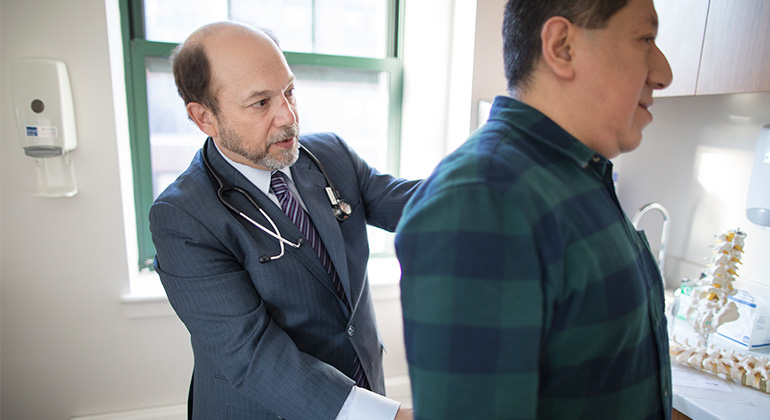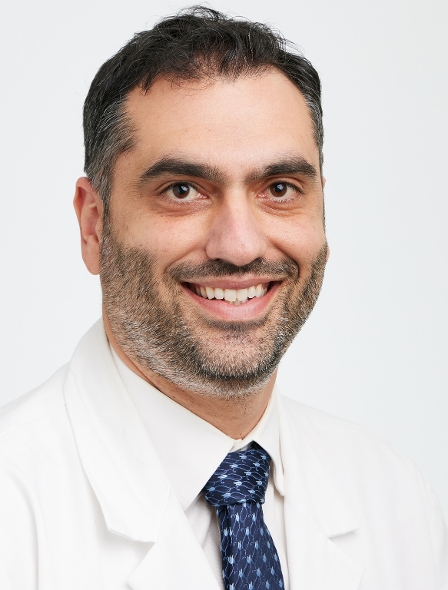Back Pain

Back pain is relatively common and experts estimate that low back pain affects about 80 percent of adults. This is true regardless of your posture. Bad posture doesn’t help. If your gluteal muscles are weak, it can cause a sore low back and poor balance. If you have back pain, it can hamper all aspects of your life.
Your spine helps you move, twist, and stretch because of the way it is constructed. It is made of bones called vertebrae that wrap around and protect your spinal cord. Between the vertebrae are spongy cushions known as discs. These are tough exterior shells filled with liquid that act as shock absorbers. Your discs protect your vertebrae when you walk, jump, or otherwise move around.
Causes of Back and Upper Back Pain
Back pain can be caused by a variety of factors, including herniated or slipped discs, accidents (car, falls) injuries, sprains, spasms, and even lifestyle choices. Upper back pain affects each person differently. It is also less common than lower back pain. Soft tissue injuries, poor posture, looking downward for long periods, sprains and strains are usually the causes of upper back pain. The back pain you experience could be minor or may indicate a serious condition.
The back conditions we see most often are:
- Arthritis of the spine. Arthritis of the spine, or spinal arthritis, is a condition where the small joints between each vertebra in the spine shrink or wear thin, causing bone spurs or enlargement of the joint. This, in turn, leads to the pain and inflammation caused by arthritis. Often, arthritis of the spine is difficult to treat and may require spine surgery. Our expert approach can help you avoid surgery and allow you to return to a more functional life.
- Lumbar radiculopathy. This condition is due to a pinched or inflamed nerve in the back that can create a wide constellation of symptoms, including severe back pain, groin pain, leg pain, and foot pain. The condition is commonly known as “sciatica.” You might feel anything from a mild ache to a sharp burning sensation in your lower back and legs. You might also experience numbness, tingling, or muscle weakness. We can often provide a quick diagnosis and long-lasting relief for this condition, using our multidisciplinary approach to medicine.
- Sacroiliac joint pain. If you have a dull pain in your lower back, it could be sacroiliac joint pain. This joint connects the spine to the pelvis; you have one on either side of the spine. It helps with forward and backward bending and absorbs pressure. Pain in this joint starts there and may radiate out to your buttocks, thighs, groin, or upper back. You may have sacroiliac joint pain due to injury, arthritis, or even pregnancy. We can stop your pain and strengthen your muscles to prevent this condition from recurring.
- Spinal stenosis. This condition happens when your spinal canal narrows, pinching the nerve roots and spinal cord. It usually affects the lower back and neck and can cause pain or weakness in the legs and thighs. You can even experience difficulty walking and keeping your balance. Some people are born with spinal stenosis, but most often, it develops over time, due to normal wear and tear.
Back Pain Treatment
Back pain is a complex condition. Most back pain can improve with home remedies such as over-the-counter pain medications, topical pain relievers, heating pads, and light exercise. Physical therapy can improve your posture and decrease your pain. It can be difficult to identify the exact cause of chronic back pain.
We recommend discussing your options with a Mount Sinai pain management/back pain doctor to help manage your condition.
Chronic back pain may require:
- Prescriptions If over-the-counter pain medications are ineffective, your doctor may prescribe antidepressants such as Cymbalta or Amitriptyline for back pain.
- Cortisone injections If your back pain radiates down your leg, your doctor may inject you with an anti-inflammatory drug around your spinal cord to decrease inflammation around the nerve roots. This provides temporary relief from back pain for one to two months.
- Spinal cord stimulator A device known as a spinal cord stimulator is implanted under your skin that delivers low levels of electricity to the spinal cord to relieve pain.
- Surgery If the back pain is unrelenting and progressive, you may seek a surgery option. Surgery is typically reserved for structural back problems like a herniated disk or spinal stenosis that hasn’t responded to other treatment options.






